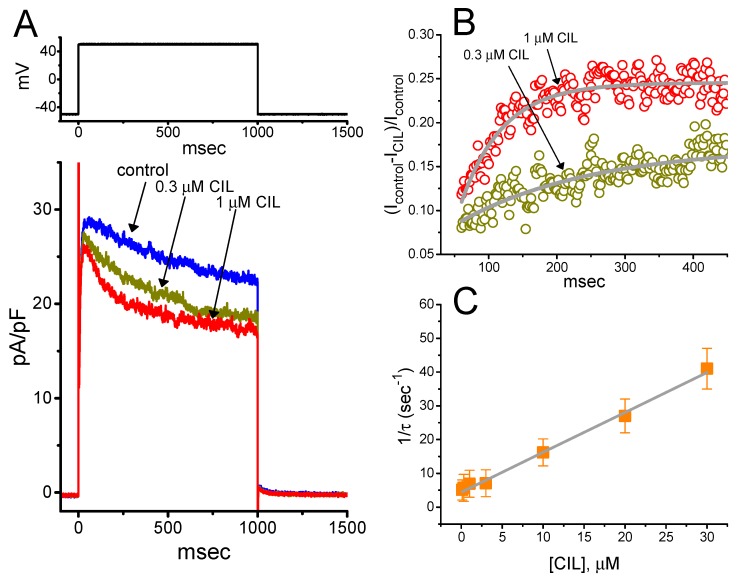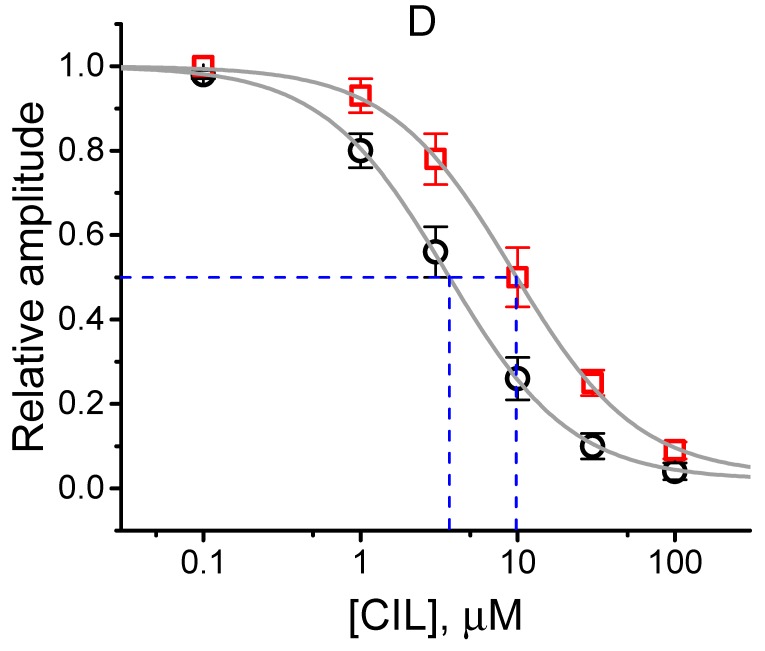Figure 4.
Kinetic analyses of CIL-mediated inhibition of IK(DR) in GH3 cells. (A) Superimposed IK(DR) densities in the absence (a) and presence of 0.3 μM CIL (b) or 1 μM CIL (c). The upper part is the voltage protocol used. (B) The time course of a relative block of IK(DR) during exposure to 0.3 μM CIL or 1 μM CIL was least-squares fitted by a single exponential with the value of 175 or 145 msec (indicated by the smooth line), respectively. The relative block of the current (i.e., (Icontrol-ICIL)/Icontrol) was determined by dividing CIL-sensitive current by the current obtained in control. In (C), the reciprocal of time constant (i.e., 1/τ) of relative block versus the CIL concentration was constructed and then plotted. Data points (indicated in filled squares) were approximately fitted by linear regression, indicating that there was a molecularity of one. From the first-order reaction scheme, as elaborated in Materials and Methods (Equation (4)), blocking (k+1*) or unblocking (k−1) rate constant for CIL-mediated block of IK(DR) was calculated to be 1.18 sec−1μM−1 or 4.45 sec−1, respectively. Each data point indicates the mean ± SEM (n = 89–). (D) Concentration-dependent inhibition of CIL on IK(DR) amplitude measured at the beginning (square symbols) and end (circle symbols) of 1-s depolarizing step to +50 mV from a holding potential of −50 mV (mean ± SEM; n = 89– for each data point). The continuous lines overlaid onto the data points were fitted by the modified Hill equation, as detailed in Materials and Methods (Equation (1)). The IC50 value achieved at the beginning or end of 1-s step depolarization (indicated in the vertical dashed line) was estimated to be 9.32 or 3.54 μM, respectively.


